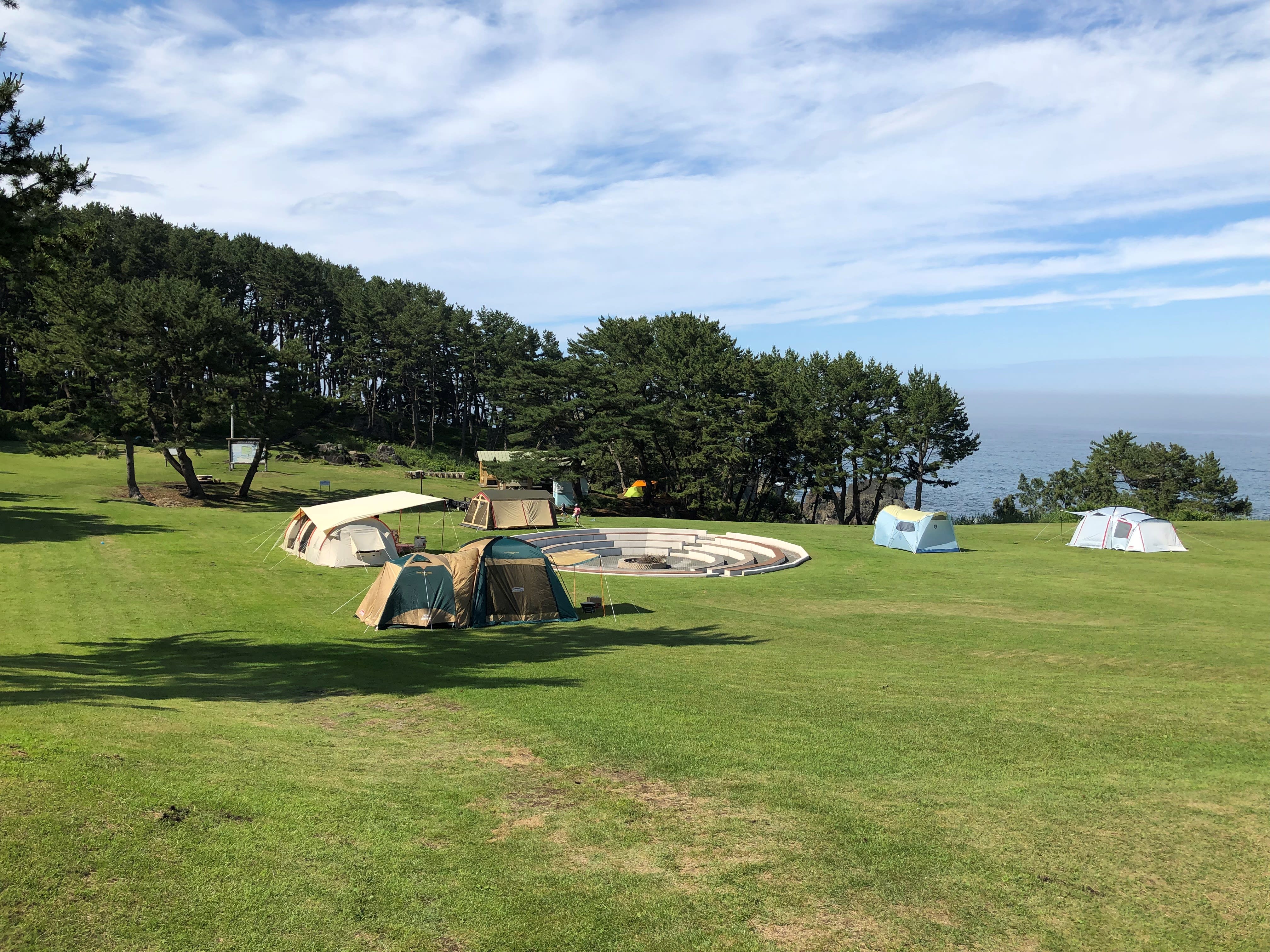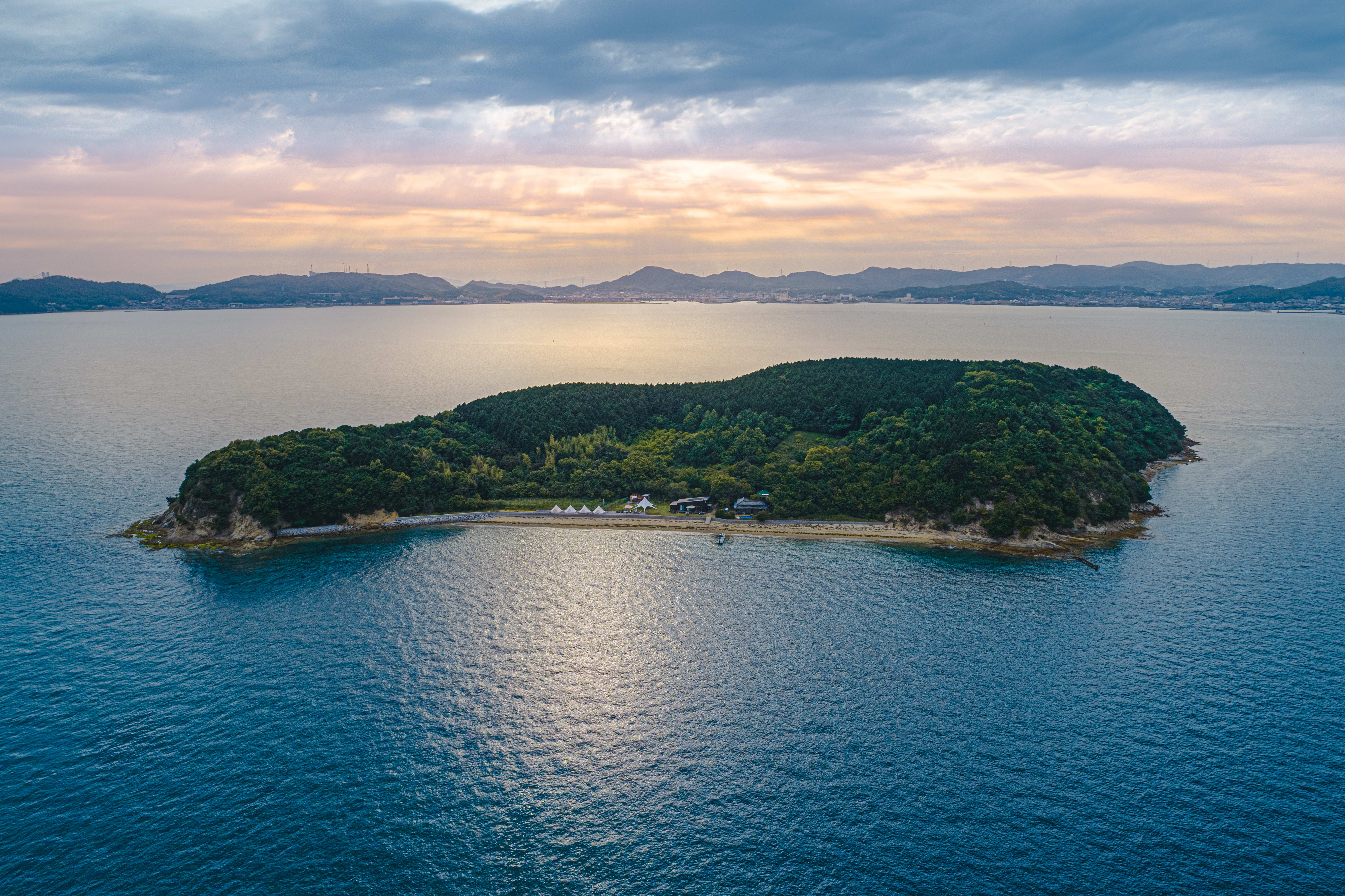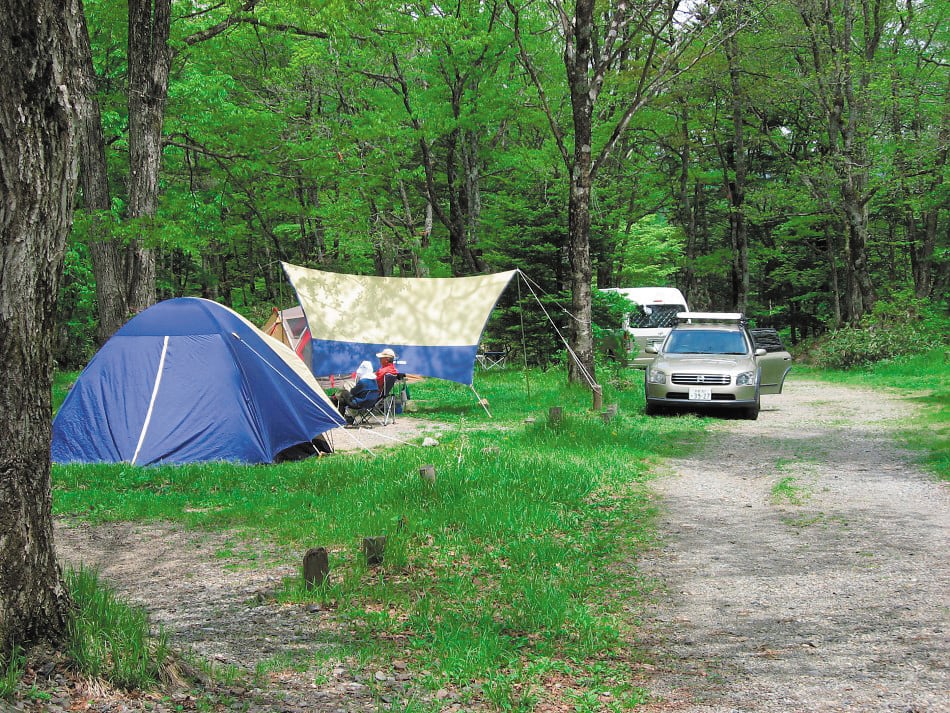Camping is an excellent way to discover the diverse natural landscapes of Japan’s national parks. From tent camping to car camping, mountain huts to beach campsites, there are possibilities for every style of camper.
Japan’s national parks offer a variety of terrain for camping, including beach camping, forest camping, high-altitude camping and lakeside camping. Some campsites even have hot springs nearby with scenic views—Who says camping can’t be comfortable? On Japan’s subtropical islands, you can wake up on the beach in the morning to discover sea turtles along the shore, while family-friendly campgrounds offer fun outdoor activities for kids, including cycling and easy walking trails. From the shores of the Fuji Five Lakes in the foothills of Mount Fuji to the remote wilderness of northern Hokkaido, the parks offer limitless environments for pitching your tent.
Getting to the campgrounds
Personal transportation can make a camping trip in Japan’s national parks smoother. Some campgrounds are located in remote areas with infrequent public transport, though some are serviced by local buses. It is much easier to reach campgrounds in the national parks of Hokkaido and Tohoku, for example, if you have your own vehicle. However, many of the national parks in the Kanto region, which are closer to Tokyo, have public access campgrounds. Consider your options based on how much time you have and whether you are able to a rental car with an international driving permit in Japan.
Camping with a car
Commonly referred to as “auto camping” in Japan, driving to a campground is a good option if you are able to rent a car. It’s particularly convenient in the national parks where there are fewer public transportation options. Camping with a private vehicle gives you the freedom to combine overnight camping stopovers with stays in hotels or ryokan, traditional Japanese inns. For more information on driving and road trips through the parks, read our guide to driving in Japan's national parks.
Camping costs
Prices vary depending on whether you’re pitching a tent, car camping, renting a cabin, or staying in a mountain lodge. Many campgrounds rent tents for around 2,000 yen, or allow you to stay in permanent on-site tents. You can often find shops that rent camping equipment such as sleeping bags and stoves in towns near popular outdoor destinations. Cabins and bungalows are often available at campgrounds, too. Many campgrounds charge a fee to use the site plus an additional fee per person. If you bring your own car and park it on-site, fees are likely to be higher.
Average costs for camping in Japan:
| Type | Basic Campsite | Pre-Pitched Tent Site | Cabin or Cottage |
| Cost | From JPY 400–5,000 | From JPY 4,000 | From JPY 10,000 |
On-site amenities
Campgrounds in Japan’s national parks offer a wide array of amenities, from basic to relatively deluxe. Some campsites offer electricity or rent electric generators, while others even serve meals. RV parks and campsites with hookups for camper vans are not as common in Japan as other countries, and thorough planning is required to travel and camp in Japan with a RV.
Here are some of the amenities you can expect to find at a campground in Japan:
- Toilets
- Electrical outlets
- Cooking facilities (a covered area where you can have a barbeque, or cook using your own camping stove)
- Showers (mainly coin-operated)
- Wi-Fi
- Laundry facilities
- Natural hot springs, foot baths and hand baths
Browse the many campgrounds in Japan’s national parks to see the amenities that are available.
Family-friendly locations
Miike Camp Village in Kirishima-Kinkowan National Park is ideal for families with children, with a water plaza that has pools to splash in. Mori-no-Kuni Daisen Field Athletics is a family-friendly adventure park with campsites in Daisen-Oki National Park. Kids will love the park’s 50-plus kinds of play equipment. Shima Autocamp Ground in Ise-Shima National Park is also a great destination for families, with several activity programs including guided group kayaking trips.

Glamping
Glamping, or "luxury camping," is a good option for those who prefer creature comforts while getting close to nature. In recent years, Japan’s glamping resorts have attracted visitors with their all-inclusive services and exclusive experiences.
Visitors to Ise-Shima National Park can marvel at the splendor of the night sky on Strawberry Beach at Kabuku Resort, in a comfortable pre-pitched tent with a bed, refrigerator and premium amenities. Other popular glamping locations include Hoshinoya-Fuji resort in Fuji-Hakone-Izu National Park and Kujirajima Island in Setonaikai National Park.

What to bring
Deciding what to pack depends on the length of your vacation, where you’ll be camping, the time of year, and whether you have your own transportation. Taking these factors into account, here’s a short list of essentials:
- Tent
- Lightweight cooking stove
- Waterproof rain gear
- Insect repellent
- Sleeping bag (preferably a four-season sleeping bag if you’re camping in fall or winter)
- Sleeping pad
- Close-toed shoes
- Food and snacks (there may not be grocery stores nearby)
- Plastic bags (for garbage)
- Toiletries
- Towel
- Flashlight/headlamp and spare batteries
- Sunscreen
- Medicine
- First-aid kit
If you're planning to hike in the mountains over several days in one of the national parks, the country's extensive mountain hut system provides basic facilities and lodging and tent sites for camping. If you are camping in high altitudes, be prepared for cold temperatures and weather conditions that change frequently.

Guidelines for camping in the parks
- Camping season: Campgrounds are generally open during the warmer months (from May or June to October) in central Honshu and areas north of Tokyo, and in the mountains at high altitudes. Most close when snow starts to fall. In southern Japan, many national park campgrounds in are open year-round.
- Carry in, carry out: If trash bins are not available, hold on to your garbage until you can dispose of it properly.
- Campfires: Many campsites prohibit campfires. Pack a camping stove if you want to cook, or use designated cooking areas provided by the campgrounds.
- Wild camping: Unregulated camping, or "wild camping," is generally not allowed in Japan’s national parks. Stick to designated campsites, which provide facilities like toilets, cooking areas, and waste disposal, for the protection of the environment.
- Warnings and advisories: Check the latest updates about bear sightings, volcanic activity alerts, Japanese hornet warnings, and other safety alerts before heading out to the campground. Visitor information centers in the national parks are a good resource for this kind of information.
- Make a reservation: It’s a good idea to book campgrounds in advance, especially during national holidays and the summer vacation period.
Experience a different side of Japan
Camping can be a cost-effective and rewarding way to experience the diverse wildlife and beautiful landscapes of Japan's national parks, with plenty of options to suit every taste and budget. Some locations may prove challenging to reach without your own transportation, but careful planning will bring almost any camping destination within easy reach. Discover a different side of Japan, far from the crowds, and recharge amid Japan's stunning natural scenery at myriad campgrounds throughout the national parks.
Written by Erin Kessler


















